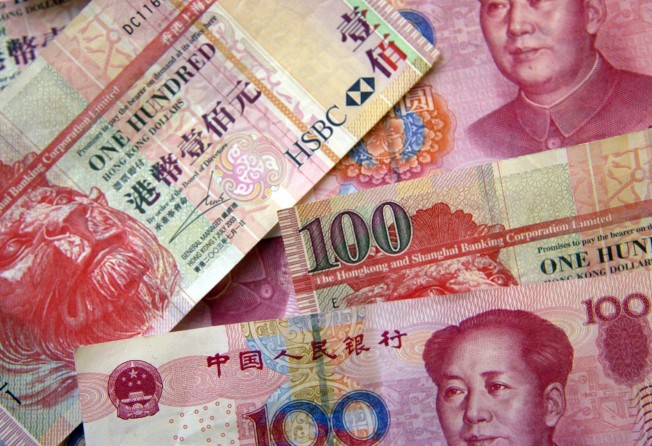Time to create new Chinese-Hong Kong dollar

Central Bankers must be Masters of Behavioural Finance. The Swiss National Bank knew that the cap against the Euro could not be maintained. Investors were even willing to accept negative interest rates to hold the Swissy. There are too few currency safe havens now that the yen has lost its lustre.
The best time for a Central Bank to act is when no one is expecting it – that’s when it has the most impact. The sudden announcement by Switzerland inhibited front running, punished those betting against the SNB, and spurred a flurry of interest rates cuts in Europe. Bad luck for other countries shadowing the Euro who had to readjust by making themselves less attractive to currency speculators.
On the other hand, if Central Banks want to temper the effect of future actions, they telegraph it miles ahead. The US Federal Reserve Board frequently announced that they were going to end quantitative easing by tapering, so that it was well discounted in advance. They are using the same tactic this year in flagging a limited rise in interest rates.
The predictable removal of the Swiss Franc cap came as a surprise; the removal of the Hong Kong dollar peg would be simply gobsmacking. The Hong Kong authorities are strictly following behavioural finance theory by positively denying all signs of peg removal.
Indeed, the peg has served us so well that there are almost no circumstances under which it would be removed – yet doing so could be the solution to a knotty problem for China.
China wants to see the RMB used as a reserve currency. But that is impossible because a reserve currency - essentially a safe haven - must be fully and freely convertible. A reserve currency doesn’t just mean buying freely, but also selling, and maintaining the perception that there will be negligible interference with that freedom.
There has never been a better time to make the Yuan fully convertible – the strong dollar would limit the currency soaring as it internationalised.
Control over the RMB has gently eased since the first yuan deposits were allowed in Hong Kong 10 years ago. These deposits have grown to around a trillion yuan today forming a shadow Chinese currency called the CNH, the Chinese Yuan in Hong Kong. This RMB is not fungible with the CNY (the Chinese Yuan in China) but their values trade very closely.
The HK dollar itself is a dead unit having been pegged first to the pound and later to the US dollar, with the current rate fixed in 1983. The prevailing view about depegging is that it would be too dangerous. The unit only floated for a relatively short period from 1974-1983 and, I recall, without much confidence in its success.
The obvious answer is to combine the dead HK dollar with the embryonic CNH. This would be a completely independent, floating currency. The CNY would be used for current account transactions such as exports and imports, whilst the new “Chinese Dollar” (HKD/CNH combined) would cater for capital account financial transactions.
It would establish a currency unit of sufficient liquidity to make it immediately investible. The money stock (M2) of the Chinese Dollar would be some HK$7 trillion, placing it within striking distance in size of the Swiss Franc at HK$10.7 trillion. And don’t forget that the Swissy has just risen 10 per cent.
The world is crying out for a new safe-haven currency and the Chinese Dollar could sit next to the Swiss Franc, supported by China’s massive current account strength and Hong Kong’s financial reputation. A safe-haven currency is a stepping-stone to a reserve currency.
Dual exchange rates are not unknown to China. An unsophisticated system existed from 1986 to 1994, when the two were unified at ¥8.70. In the fullness of time, the Chinese Dollar and the Chinese Yuan will trade close enough to merge.
The currency could be managed by a Central Bank in Hong Kong as a subsidiary of the People’s Bank of China. The Basic Law does not prevent the PBoC from guaranteeing our Central Bank’s liabilities. It does that anyway. Hong Kong would no longer have the ’wrong’ interest rates and our status as a financial World City would be assured.
China is comfortable with “one country two systems”. This could be a very elegant stepping-stone to the full international convertibility of the RMB.
Richard Harris is chief executive of Port Shelter Investment Management